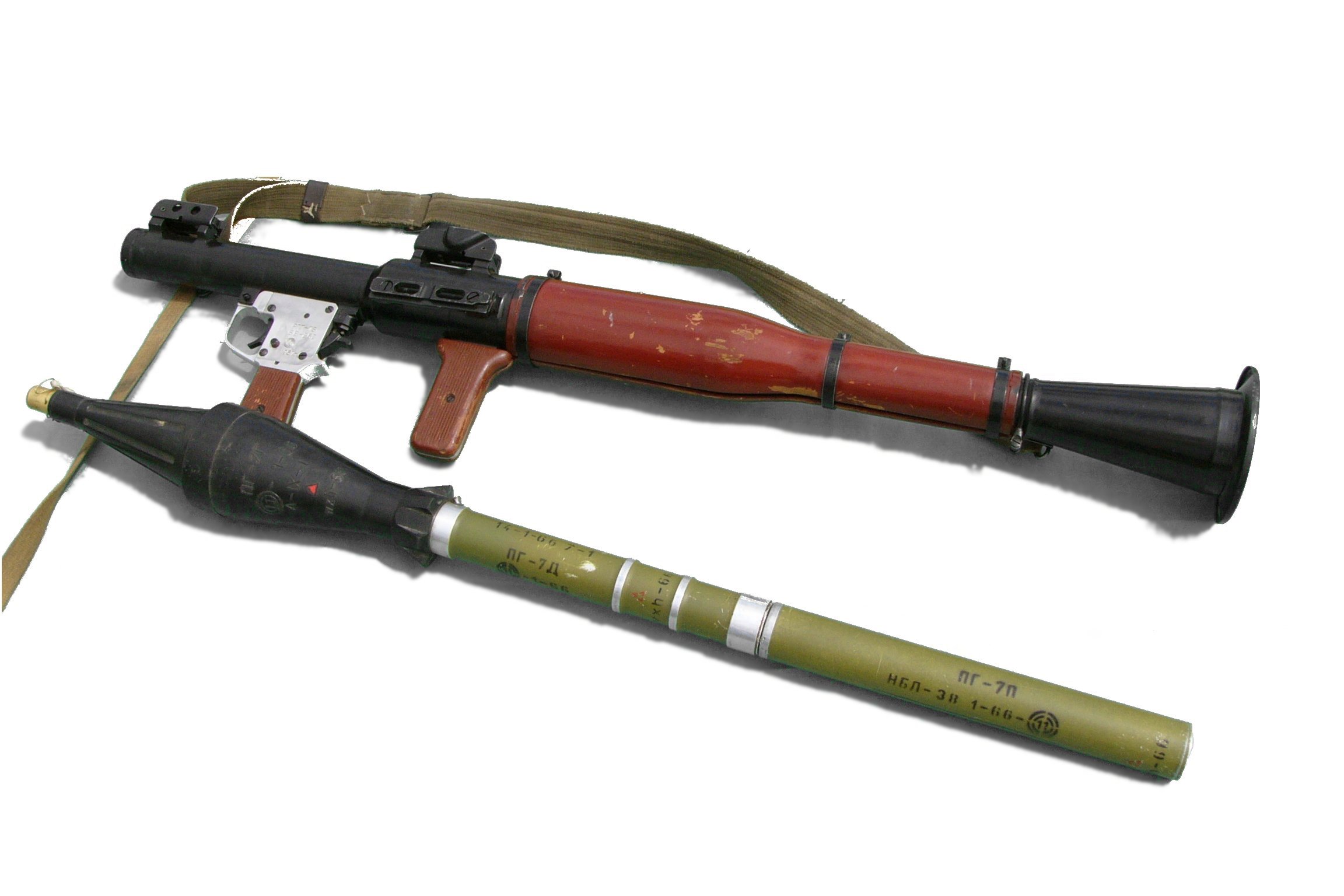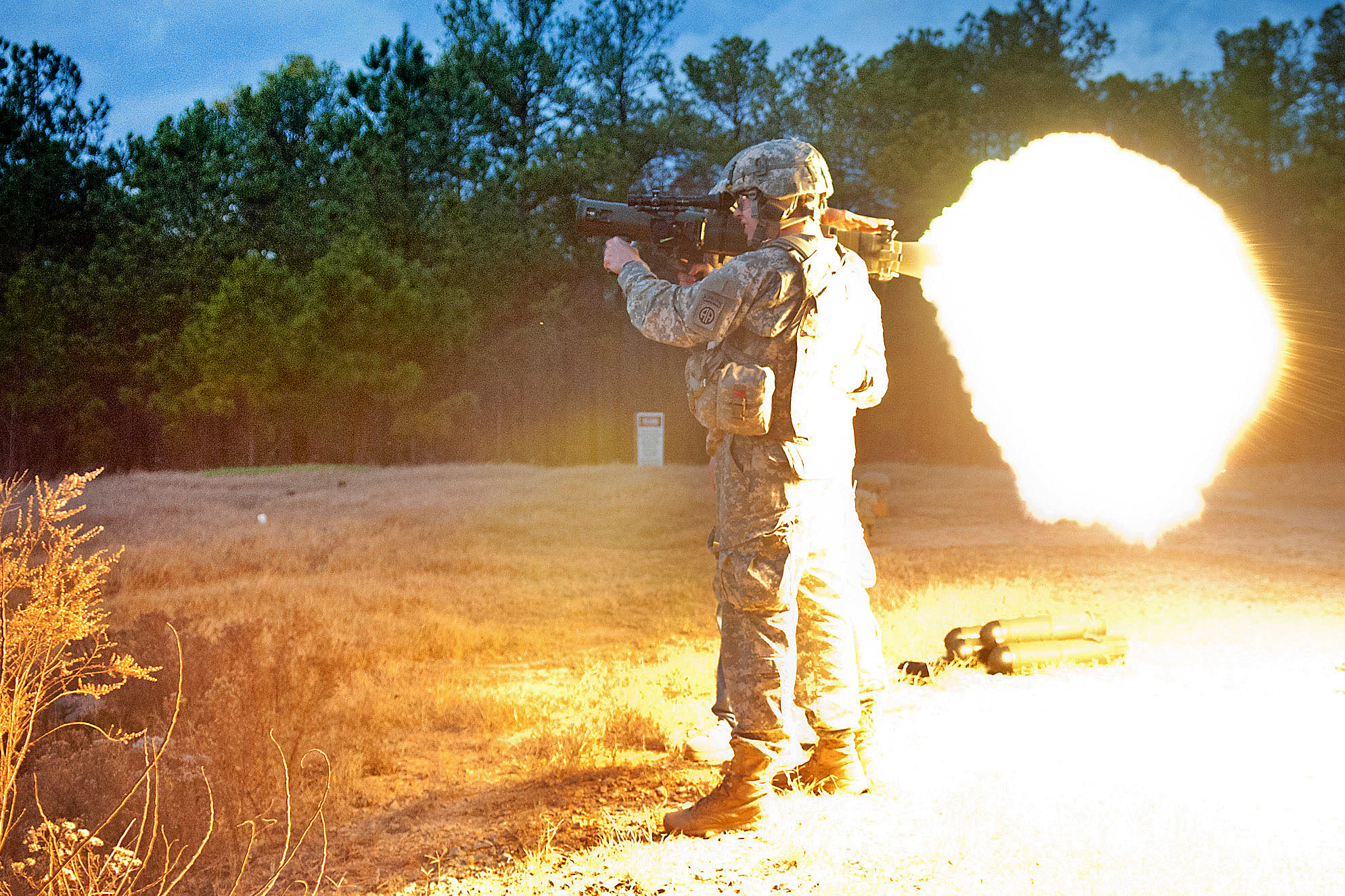|
RPG-18
The RPG-18 Mukha (russian: Муха, translit=Fly) is a Soviet short-range, disposable light anti-tank rocket launcher designed in 1972. History The RPG-18 is very similar to the US M72-series LAW anti-tank rocket launcher. The RPG-18 has been succeeded by the RPG-22, a very similar design with a larger warhead. Description The RPG-18 fires a 64 mm ''PG-18'' high-explosive anti-tank (HEAT) warhead mounted on a small rocket able to engage targets within 200 meters. The warhead self-destructs six seconds after launch, placing a limit on range even if a sight was used that was effective with targets beyond 200 meters. The RPG-18 can penetrate up to 375 mm of conventional armor. However, performance is significantly lessened when the RPG-18 is used against targets protected by HEAT-resistant explosive reactive armour (ERA) or composite armor. Unlike better known weapons, the RPG-18 requires only one operator because it is not reloadable. Assistant grenadiers are used ... [...More Info...] [...Related Items...] OR: [Wikipedia] [Google] [Baidu] |
Rocket-propelled Grenade
A rocket-propelled grenade (RPG) is a shoulder-fired missile weapon that launches rockets equipped with an explosive warhead. Most RPGs can be carried by an individual soldier, and are frequently used as anti-tank weapons. These warheads are affixed to a rocket motor which propels the RPG towards the target and they are stabilized in flight with fins. Some types of RPG are reloadable with new rocket-propelled grenades, while others are single-use. RPGs are generally loaded from the front. RPGs with high-explosive anti-tank (HEAT) warheads are very effective against lightly armored vehicles such as armored personnel carriers (APCs) and armored cars. However, modern, heavily-armored vehicles, such as upgraded APCs and main battle tanks, are generally too well-protected (with thick composite or reactive armor) to be penetrated by an RPG, unless less armored sections of the vehicle are exploited. Various warheads are also capable of causing secondary damage to vulnerable systems ... [...More Info...] [...Related Items...] OR: [Wikipedia] [Google] [Baidu] |
RPG-22
The Soviet RPG-22 ''Netto'' is a one-shot disposable anti-tank rocket launcher first deployed in 1985, based on the RPG-18 rocket launcher, but firing a larger 72.5 mm fin stabilised projectile. The weapon fires an unguided projectile, can be prepared to fire in around 10 seconds, and can penetrate 400 mm of armour, 1.2 metres of brick or 1 metre of reinforced concrete. Operation The smoothbore container is made from two fibreglass parts; a main tube containing the rocket, and a telescoping forward extension, which slides over the barrel. In transport mode, both ends of the barrel are closed by plastic covers, which open when the weapon is extended. The firing mechanism is manually cocked by raising the rear sight. Lowering the rear sight de-cocks the weapon if there is no target. On firing, there is a backblast danger area behind the weapon, of at least 15 metres. The solid propellant motor completely burns out while the rocket is still in the barrel tube, accelerati ... [...More Info...] [...Related Items...] OR: [Wikipedia] [Google] [Baidu] |
M72 LAW
The M72 LAW (light anti-tank weapon, also referred to as the light anti-armor weapon or LAW as well as LAWS: light anti-armor weapons system) is a portable one-shot unguided anti-tank weapon. The solid rocket propulsion unit was developed in the newly-formed Rohm and Haas research laboratory at Redstone Arsenal in 1959, and the full system was designed by Paul V. Choate, Charles B. Weeks, Frank A. Spinale, et al. at the Hesse-Eastern Division of Norris Thermadore. American production of the weapon began by Hesse-Eastern in 1963, and was terminated by 1983; currently it is produced by Nammo Raufoss AS in Norway and their subsidiary, Nammo Talley, Inc. in Arizona. In early 1963, the M72 LAW was adopted by the U.S. Army and U.S. Marine Corps as their primary individual infantry anti-tank weapon, replacing the M31 HEAT rifle grenade and the M20A1 "super bazooka" in the U.S. Army. It was subsequently adopted by the U.S. Air Force to serve in an anti-emplacement and anti-armor rol ... [...More Info...] [...Related Items...] OR: [Wikipedia] [Google] [Baidu] |
Shoulder-launched Missile Weapon
A shoulder-fired missile, shoulder-launched missile, man-portable rocket launcher, or man-portable missile is a rocket-propelled explosive projectile small enough to be carried by a single person and fired while held on one's shoulder. The word "''missile''" in this context is used in its original broad sense of a heavy projectile, and encompasses all guided missiles and unguided rockets. In many instances, although not technically defining all shoulder-fired missiles, the name ''bazooka'' is regularly used as an informal name, although the actual Bazooka is a type of unguided rocket launcher in its own right. Types There are two kinds of shoulder-launched weapons. The first is the recoilless gun, which is essentially an open-breech cannon. When fired, the propellant gases are expelled out of the back of the weapon to alleviate the reactional force exerted from the projectile moving forward. The other type is the rocket-propelled grenade; these typically also use a small ... [...More Info...] [...Related Items...] OR: [Wikipedia] [Google] [Baidu] |
Soviet Union
The Soviet Union,. officially the Union of Soviet Socialist Republics. (USSR),. was a transcontinental country that spanned much of Eurasia from 1922 to 1991. A flagship communist state, it was nominally a federal union of fifteen national republics; in practice, both its government and its economy were highly centralized until its final years. It was a one-party state governed by the Communist Party of the Soviet Union, with the city of Moscow serving as its capital as well as that of its largest and most populous republic: the Russian SFSR. Other major cities included Leningrad (Russian SFSR), Kiev (Ukrainian SSR), Minsk ( Byelorussian SSR), Tashkent (Uzbek SSR), Alma-Ata (Kazakh SSR), and Novosibirsk (Russian SFSR). It was the largest country in the world, covering over and spanning eleven time zones. The country's roots lay in the October Revolution of 1917, when the Bolsheviks, under the leadership of Vladimir Lenin, overthrew the Russian Provisional Government ... [...More Info...] [...Related Items...] OR: [Wikipedia] [Google] [Baidu] |
Combat UAV "Soaring Tube" Complex During The "Armiya 2021" Exhibition
Combat (French for ''fight'') is a purposeful violent conflict meant to physically harm or kill the opposition. Combat may be armed (using weapons) or unarmed ( not using weapons). Combat is sometimes resorted to as a method of self-defense, or can be used as a tool to impose one's will on others. An instance of combat can be a stand-alone confrontation or a small part of a much larger violent conflict. Instances of combat may also be benign and recreational, as in the cases of combat sports and mock combat. Combat may comply with, or be in violation of local or international laws regarding conflict. Examples of rules include the Geneva Conventions (covering the treatment of people in war), medieval chivalry, the Marquess of Queensberry rules (covering boxing) and several forms of combat sports. Hand-to-hand combat Hand-to-hand combat (melee) is combat at very close range, attacking the opponent with the body ( striking, kicking, strangling, etc.) and/or with a melee weapo ... [...More Info...] [...Related Items...] OR: [Wikipedia] [Google] [Baidu] |
Anti-tank
Anti-tank warfare originated from the need to develop technology and tactics to destroy tanks during World War I. Since the Triple Entente deployed the first tanks in 1916, the German Empire developed the first anti-tank weapons. The first developed anti-tank weapon was a scaled-up bolt-action rifle, the Mauser 1918 T-Gewehr, that fired a 13mm cartridge with a solid bullet that could penetrate the thin armor of tanks of the time and destroy the engine or ricochet inside, killing occupants. Because tanks represent an enemy's strong force projection on land, military strategists have incorporated anti-tank warfare into the doctrine of nearly every combat service since. The most predominant anti-tank weapons at the start of World War II in 1939 included the tank-mounted gun, anti-tank guns and anti-tank grenades used by the infantry, and ground-attack aircraft. Anti-tank warfare evolved rapidly during World War II, leading to the inclusion of infantry-portable weapons such a ... [...More Info...] [...Related Items...] OR: [Wikipedia] [Google] [Baidu] |
Rolled Homogeneous Armour
Rolled homogeneous armour (RHA) is a type of vehicle armour made of a single steel composition hot-rolled to improve its material characteristics, as opposed to layered or cemented armour. Its first common application was in tanks. After World War II, it began to fall out of use on main battle tanks and other armoured fighting vehicles intended to see front-line combat as new anti-tank weapon technologies were developed which were capable of relatively easily penetrating rolled homogeneous armour plating even of significant thickness. Today, the term is primarily used as a unit of measurement of the protection offered by armour on a vehicle (often composed of materials that may not actually contain steel, or even contain any metals) in equivalent ''millimetres of RHA'', referring to the thickness of RHA that would provide the same protection. Typically, modern composite armour can provide the same amount of protection with much thinner and lighter construction than its protectiv ... [...More Info...] [...Related Items...] OR: [Wikipedia] [Google] [Baidu] |
High-explosive Anti-tank
High-explosive anti-tank (HEAT) is the effect of a shaped charge explosive that uses the Munroe effect to penetrate heavy armor. The warhead functions by having an explosive charge collapse a metal liner inside the warhead into a high-velocity explosively formed penetrator (EFP) jet; this is capable of penetrating armor steel to a depth of seven or more times the diameter of the charge (charge diameters, CD). The EFPs jet effect is purely kinetic in nature; the round has no explosive or incendiary effect on the target. Because they rely on the kinetic energy of the EFP jet for their penetration performance, HEAT warheads do not have to be delivered with high velocity, as an armor-piercing round does. Thus they generate less recoil. The performance of HEAT weapons has nothing to do with thermal effects, with HEAT being simply an acronym. History HEAT warheads were developed during World War II, from extensive research and development into shaped charge warheads. Shaped char ... [...More Info...] [...Related Items...] OR: [Wikipedia] [Google] [Baidu] |
Russo-Ukrainian War
The Russo-Ukrainian War; uk, російсько-українська війна, rosiisko-ukrainska viina. has been ongoing between Russia (alongside Russian separatist forces in Donbas, Russian separatists in Ukraine) and Ukraine since February 2014. Following Ukraine's Revolution of Dignity, Russia Annexation of Crimea by the Russian Federation, annexed Crimea from Ukraine and supported pro-Russian separatists in the War in Donbas (2014–2022), war in Donbas against Ukrainian government forces; fighting for the first eight years of the conflict also included List of Black Sea incidents involving Russia and Ukraine, naval incidents, Russian–Ukrainian cyberwarfare, cyberwarfare, and Russia–Ukraine relations, heightened political tensions. In February 2022, the conflict saw a major escalation as Russia launched a 2022 Russian invasion of Ukraine, full-scale invasion of Ukraine. In early 2014, pro-Russian Ukrainian president Viktor Yanukovych was ousted from office as a r ... [...More Info...] [...Related Items...] OR: [Wikipedia] [Google] [Baidu] |







